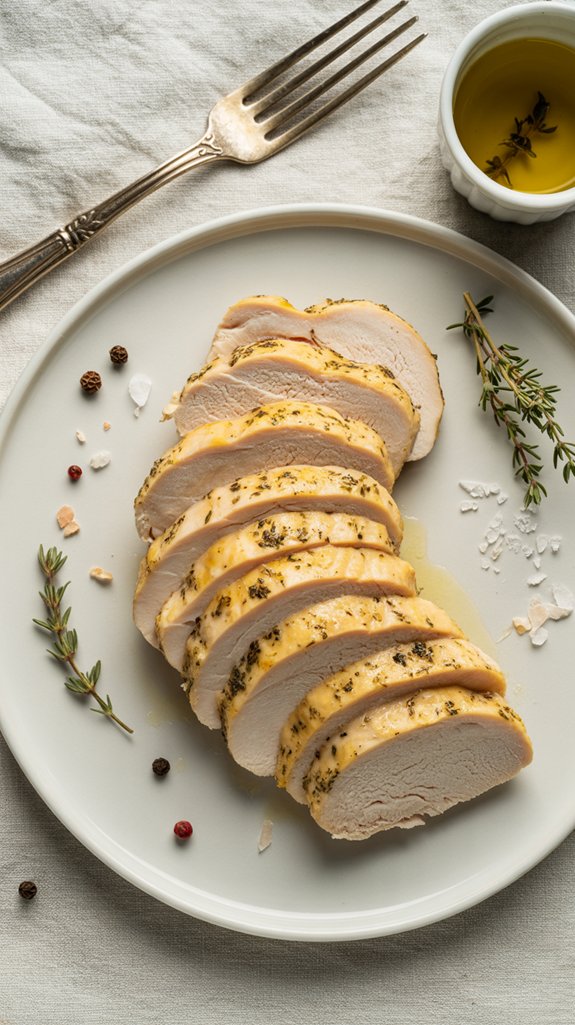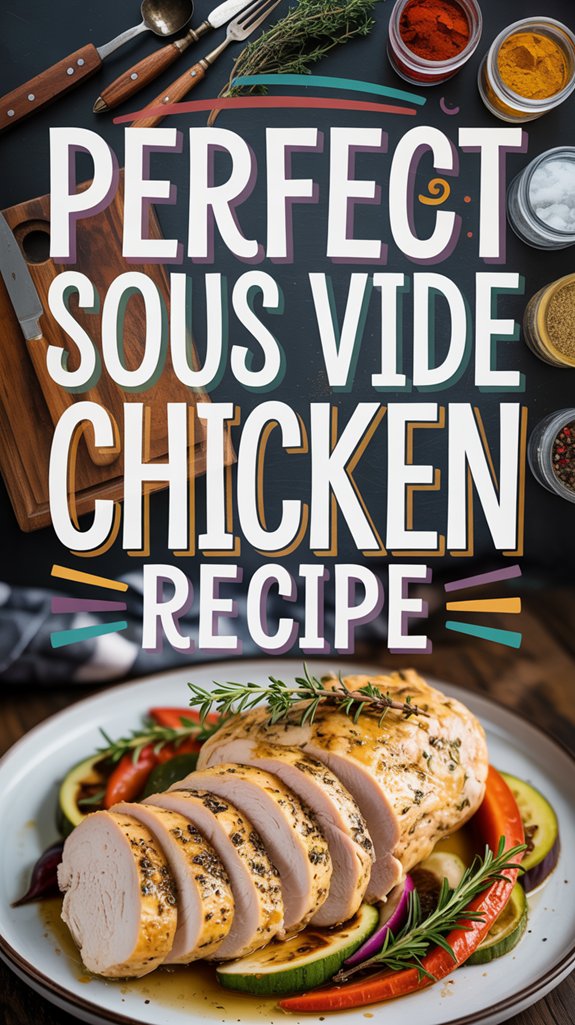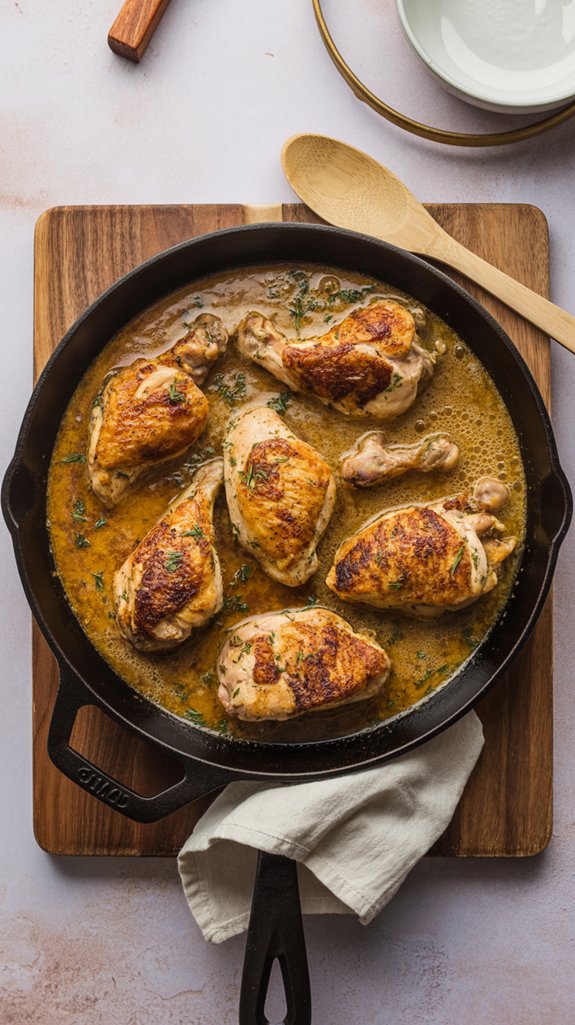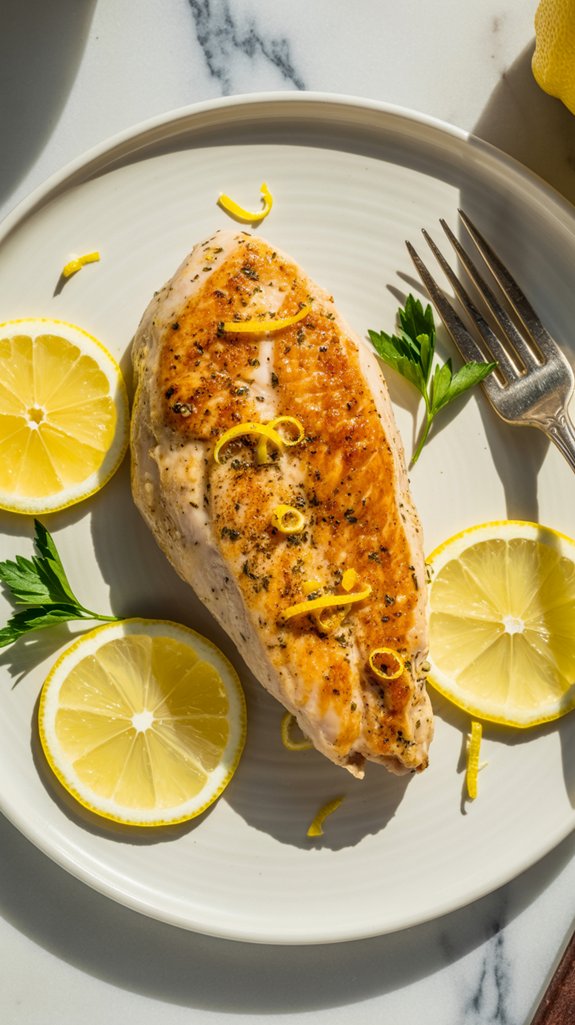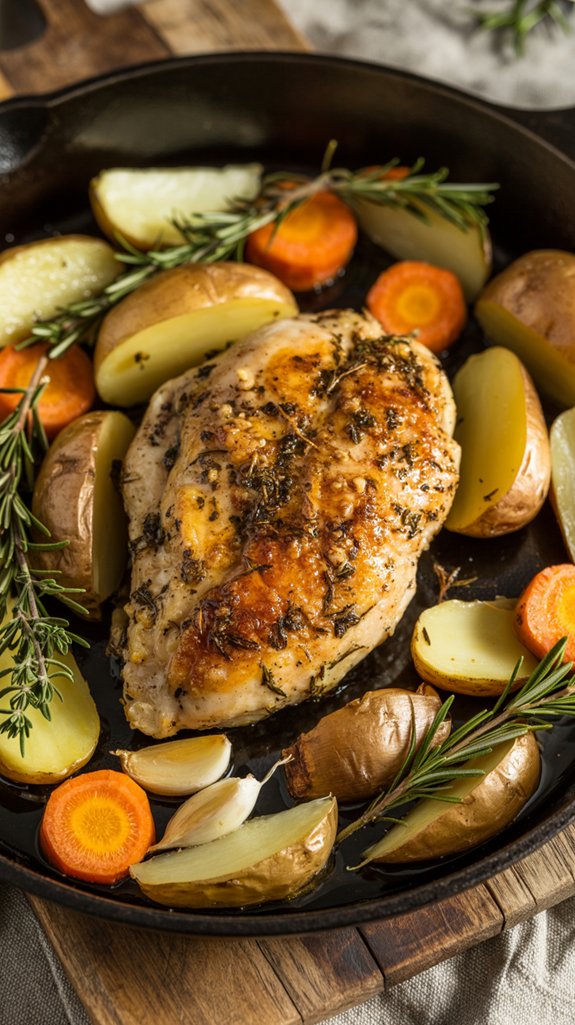Why You’ll Love This this Perfect Sous Vide Chicken Breast
This sous vide chicken breast method takes all the guesswork out of cooking perfect, juicy chicken every single time.
You get restaurant-quality results with that gorgeous crispy skin and incredibly tender meat that stays moist from edge to edge.
The best part is how foolproof it’s – no more dry, overcooked chicken disasters that make you question your cooking skills.
Ingredients List
You’ll need just a handful of simple ingredients to create this restaurant-quality sous vide chicken breast at home.
- 1 (12 ounce) boneless chicken breast, skin on
- Kosher salt
- Canola oil, for searing
Here are a few things to keep in mind when gathering your ingredients:
- Choose chicken breasts with the skin still attached – the skin acts like a natural barrier that helps lock in moisture and creates that coveted crispy finish when you sear it
- Kosher salt works better than table salt because the larger crystals distribute more evenly and don’t oversalt the meat
- Canola oil has a high smoke point, making it perfect for that final high-heat sear without burning
- This cooking method actually preserves more of the chicken’s natural nutrients since nothing leaches out into boiling water
- You’re avoiding any added fats or heavy sauces, keeping it lean and clean
Step by Step Directions
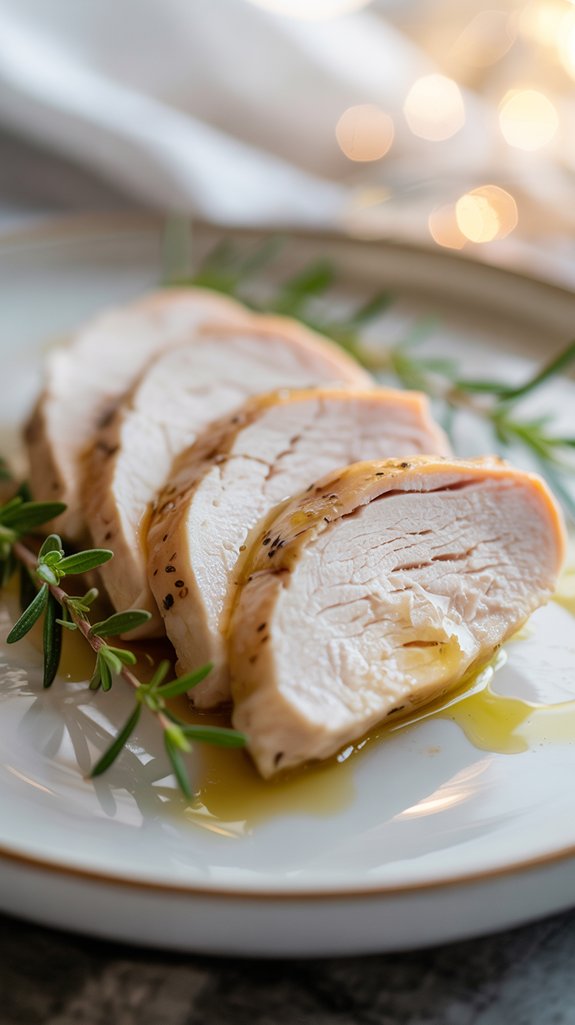
Follow these precise steps to create perfectly cooked sous vide chicken breast with crispy skin.
- Preheat and prepare a 165°F water bath.
- Trim excess fat from the 12-ounce boneless chicken breast while leaving as much skin on as possible.
- Season all sides of the chicken with a small pinch of kosher salt.
- Allow the chicken to come to room temperature before sealing.
- Wrap the chicken in several layers of plastic wrap, folding over the edges and applying pressure to eliminate air pockets for a tight seal.
- Shape the wrapped chicken into a cylinder and tie off both ends.
- Cook in the 165°F water bath for 45 minutes, maintaining consistent temperature.
- Remove chicken from water and insert a probe thermometer to verify internal temperature reaches 165°F.
- If not fully cooked, return to water bath until proper temperature is achieved.
- Let the chicken rest for 10 minutes after cooking.
- Cut one end of the plastic wrap and slide the chicken out.
- Pat the chicken dry with paper towels to remove excess moisture.
- Heat a pan with a thin film of canola oil over medium-high heat.
- Sear the chicken to crisp the skin until golden brown.
- Slice and serve immediately.
For consistent results in your kitchen, consider investing in a professional rice cooker to elevate your cooking capabilities beyond just perfect grains.
Substitutions and Variations
• Add aromatics to the bag – Fresh thyme sprigs, lemon slices, or crushed garlic cloves can infuse subtle flavors during the long, gentle cook.
Just don’t go overboard or you’ll overpower the chicken.
• Skip the plastic wrap method – Use a vacuum sealer or even a zip-top bag with the water displacement method if wrestling with plastic wrap makes you want to order takeout instead.
Additional Things to Serve With This Dish
This perfectly tender chicken breast pairs beautifully with just about anything you’ve got hanging around your kitchen.
- Roasted vegetables – Asparagus, Brussels sprouts, or carrots get crispy edges while your chicken stays impossibly juicy, and honestly, the contrast is what dreams are made of.
- Creamy mashed potatoes – Because sometimes you need that comforting, stick-to-your-ribs side that makes everything feel like a warm hug on a plate.
- Simple green salad – Arugula or mixed greens with a light vinaigrette cuts through the richness and makes you feel like you’re being healthy, even if you’re not.
- Rice pilaf or wild rice – The nutty, earthy flavors complement the clean taste of sous vide chicken without competing for attention.
- Steamed broccoli or green beans – Quick, easy, and they won’t judge you if you’re feeling lazy about vegetable prep.
- Garlic bread – Look, sometimes you just want to soak up those pan drippings from searing, and crusty bread does the job perfectly.
- Pasta with olive oil and herbs – Light, simple, and it turns your chicken into something that feels fancier than it actually was to make.
Cooking Tips & Tricks (Chef’s Notes)
Here are the game-changing tips that’ll make your sous vide chicken turn out restaurant-quality every single time.
- Don’t skip the room temperature step – Cold chicken straight from the fridge throws off your cooking time, and nobody wants to guess whether their chicken is actually done.
- Double-check your water temperature – Those cheap thermometers can be off by 10 degrees, which is the difference between perfect and overcooked when you’re working with such precision.
- Massage out every air bubble – Any trapped air creates hot spots that cook unevenly, so really work that plastic wrap until it’s skin-tight against the meat.
- Keep that skin intact – I know it’s tempting to trim everything, but that skin protects the meat and crisps up beautifully when you sear it afterward.
- Don’t rush the searing step – Get your pan properly hot before the chicken hits it, because you want that skin to go from pale to golden in about 30 seconds per side.
- Let it rest after the water bath – Those juices need time to redistribute, otherwise they’ll run all over your cutting board instead of staying in the meat where they belong.
- Pat completely dry before searing – Wet chicken steams instead of sears, and steamed chicken skin is nobody’s friend.
- Use a probe thermometer you trust – The plastic method works great, but that final temp check is your safety net, especially if you’re still getting comfortable with sous vide timing.
Nutritional Facts
This sous vide chicken breast delivers lean protein with minimal added fats, making it an excellent choice for health-conscious meals.
- Calories: 185 per serving (12 oz chicken breast)
- Protein: 35 grams – supports muscle building and repair
- Fat: 4 grams (mostly from skin and minimal searing oil)
- Carbohydrates: 0 grams – perfect for low-carb diets
- Sodium: Variable based on salt used during seasoning
- Cholesterol: 85 milligrams
- Saturated Fat: 1 gram
- Iron: 1 milligram – about 6% of daily value
- Vitamin B6: 0.5 milligrams – essential for brain function
- Niacin: 10 milligrams – supports heart health and metabolism
- Phosphorus: 200 milligrams – important for bone health
- Zero sugar, zero fiber – pure protein source
- Cooking method preserves nutrients – gentle temperature prevents nutrient loss that occurs with high-heat cooking
Fun “Did You Know?”
While sous vide cooking might seem like a modern culinary trend, French and American engineers actually developed the technique in the 1960s for industrial food preservation.
I find it fascinating that this precise temperature control method was first used in hospitals to cook food safely for patients with compromised immune systems.
The term “sous vide” literally means “under vacuum” in French, referring to the vacuum-sealed cooking process.
What’s really amazing is that sous vide cooking can retain up to 90% of nutrients compared to traditional cooking methods, which often lose vitamins through high heat exposure.

